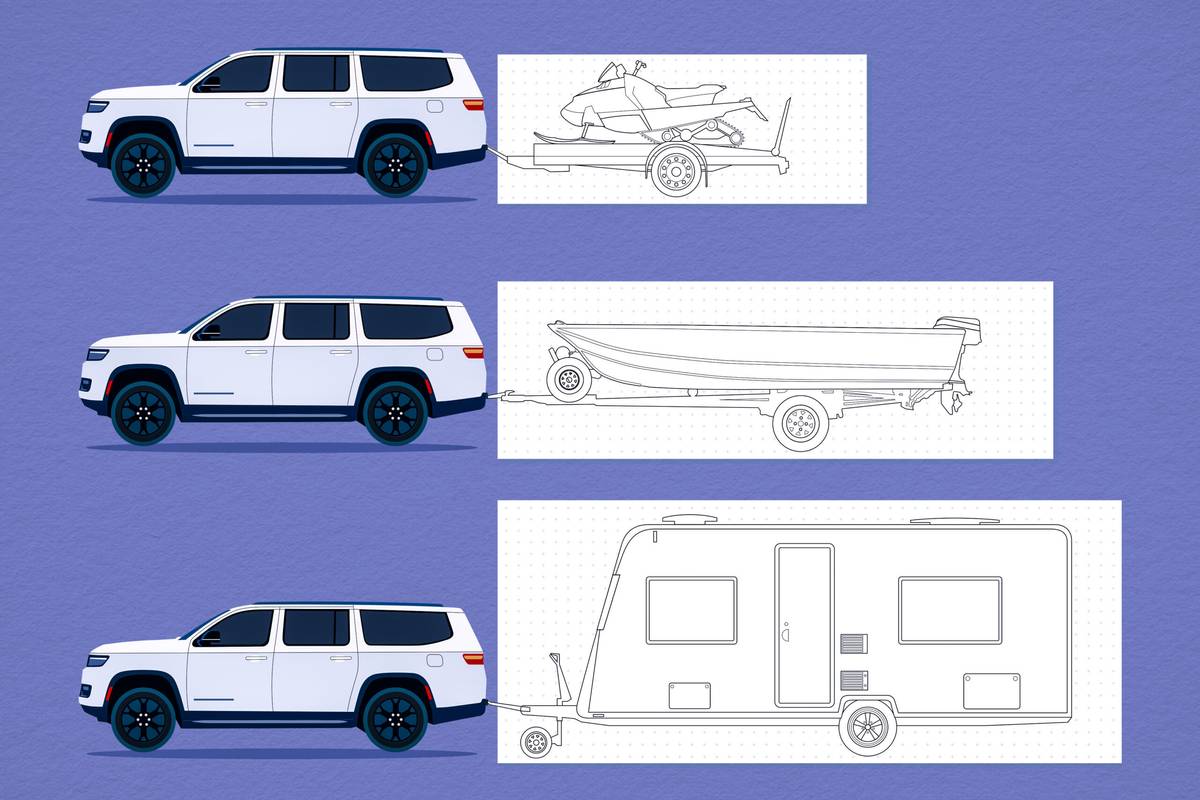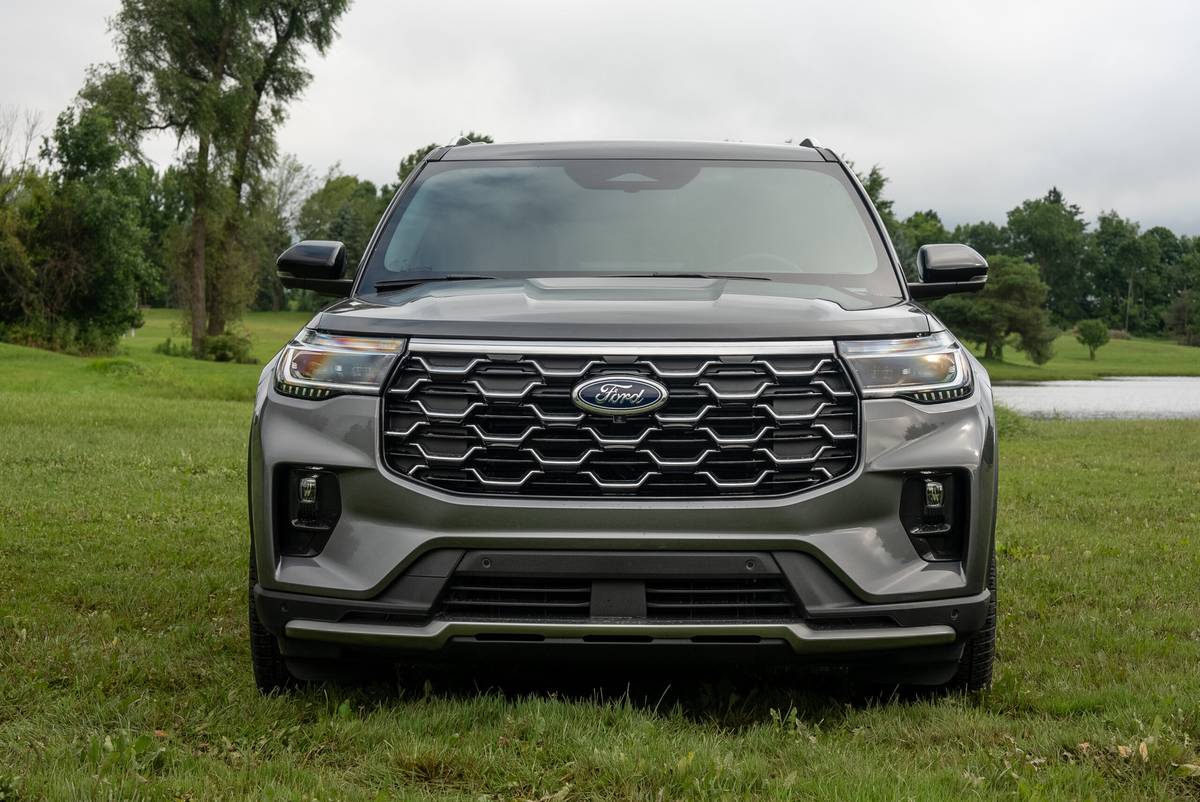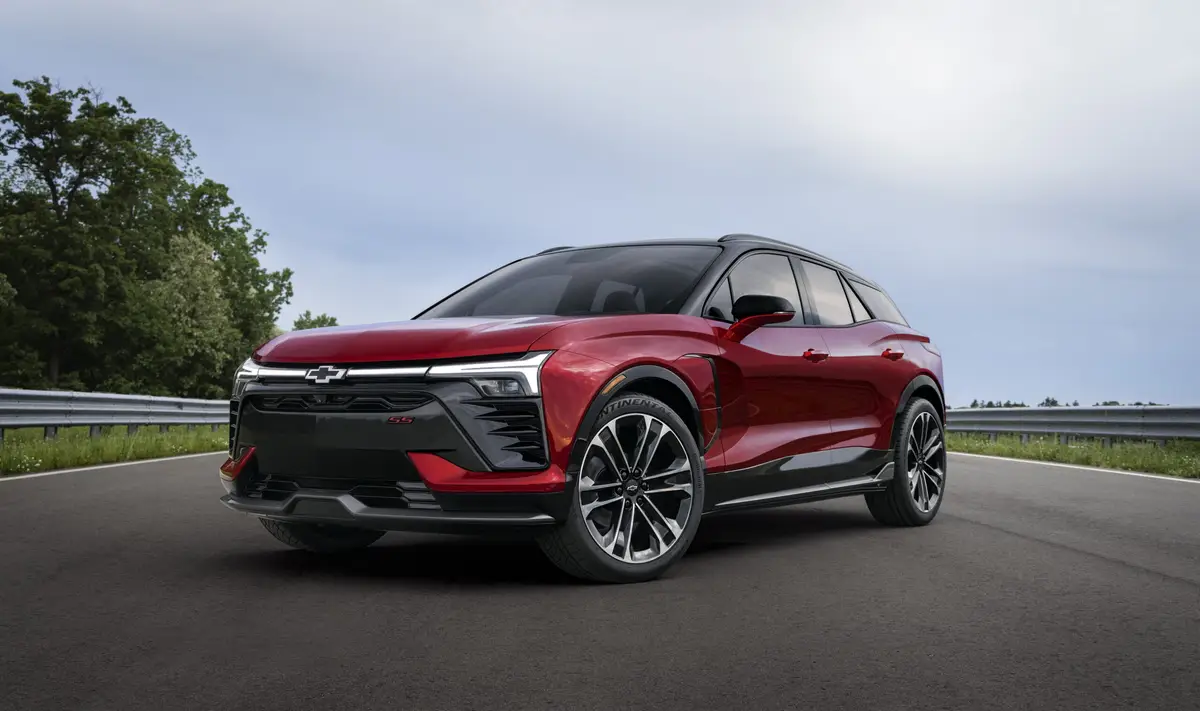Extreme Off-Roading in Toyota's TRD Trio

“All stop, all trucks stop,” came the call over the radio as our convoy crept to a halt in the semidarkness. Heavy rains had rolled through the area the day before, but there was no evidence of that to us — blue skies were overhead the whole day as we drove into Canyonlands National Park. It turned out that the deluge had already taken its toll — what had been a dirt road was now a 6-foot-deep pit large enough to hold a mid-size sedan, and it was sitting directly between us and our targeted campsite. We’d have to find another spot to stay for the night.
It was then that I realized this was not going to be like any press trip I had ever been on. Usually when we’re invited to test a truck by a manufacturer, the environment is controlled: We drive on a street route, do some guided off-roading, maybe some towing. I get it — each truckmaker wants its vehicles to be shown in the best possible light.
That’s why I was surprised when Toyota invited us to test its latest Toyota Racing Development off-road products on a trip it called a “Drive to the Summit.” Our group, however, would be doing the opposite, traversing the summit in Colorado down to St. George, Utah. The trek would be mostly off-road, camping as we went along. Most trips are tame. This one would be wild.
Here were the three vehicles serving as our transportation:
2016 Toyota Tacoma TRD Off-Road Double Cab
MSRP: $37,610 (including destination)
Powertrain: 278-horsepower, 3.5-liter V-6, 265 pounds-feet of torque; six-speed automatic transmission
Key 4×4 Features: Part-time 4×4 system with two speeds and electronically controlled transfer case; automatic limited-slip differential; off-road tuned suspension with Bilstein shocks; locking rear differential; Multi-Terrain Select System with crawl control.
2016 Toyota Tundra TRD Pro CrewMax
MSRP: $46,834
Powertrain: 381-hp, 5.7-liter V-8, 401 pounds-feet of torque; six-speed automatic transmission
Key 4×4 Features: TRD dual exhaust, TRD front skid plate; 2.5-inch Bilstein shocks with remote reservoirs; part-time four-wheel drive with electronically controlled transfer case; automatic limited-slip differential.
2016 Toyota 4Runner TRD Pro
MSRP: $42,790
Powertrain: 270-hp, 4.0-liter V-6, 278 pounds-feet of torque; five-speed automatic transmission
Key 4×4 Features: Part-time 4WD system; locking rear differential; Multi-Terrain Select System with crawl control; TRD front skid plate; Bilstein shocks with remote rear reservoir.
The support vehicles in our group belong to Expedition Overland, which provided protection and expertise for the adventure. These seasoned off-road and adventure enthusiasts have done long treks across Central America and even Siberia, and their experience came in handy multiple times on the trail. Our guide for the trip was Kurt Williams of Cruiser Outfitters. Williams was nicknamed “Kurt-ipedia” for his encyclopedic knowledge of the Four Corners region and Utah especially, and proved it with anecdotes about everything from gas stations carved into rocks to the origins of the trails we traveled.
Both of Expedition Overland’s vehicles were heavily modified with rooftop tents and custom racks on top and in the back to hold gear, supplies and propane stoves, which slid out to cook dinner each evening. Its Tacoma, called “X3,” even towed a trailer the entire time. The 4Runner was named “Rufio,” a nod to the character from the movie “Hook” who leads an adventurous band of wild boys. Fitting.
The four-day journey would cover more than 800 miles and take us from the Rocky Mountains to St. George, Utah, through mountains, deserts and canyons. Along the way, I found a love for adventure travel I didn’t know existed and I got to know these rigs by using them the way they were intended: on trails, gear in the back and dirt plastered in every possible crevice — on both myself and the truck.
Day 1: Ouray to Telluride, via Imogene Pass, to Canyonlands National Park
I spent the first day of the trek in the 2016 Tacoma TRD Off-Road, the most off-road-capable version of the Tacoma until the TRD Pro launches as a 2017 model. Although the TRD Pro will take the Tacoma’s off-road prowess to the next level with a more aggressive Fox shock setup, the TRD Off-Road is also impressive: Bilstein shocks, Toyota’s crawl control and Multi-Terrain Select technology, and good all-around all-terrain tires.
The Imogene Pass runs from Ouray, Colo., up the western Rockies to 13,114 feet, then down the other side of the mountain to Telluride, Colo. The trail was a mix of loose gravel, with some portions that required rock crawling and a water crossing or two. It also offered the most genuinely spectacular views I’ve ever seen. Standing at the top of the pass, you can see down both the eastern and western sides of the Rockies — breathtaking stuff, and not just from the altitude. I’ve driven the Tacoma TRD Off-Road in a couple of off-road parks, but this was the first long trail I’d taken it on and it proved to be a capable performer in that setting as well.
My preference has generally been for the Tundra’s more powerful V-8 over the Tacoma’s V-6, but on a tight, rocky trail, I was happy to be in the smaller, lighter, more agile Tacoma. There were a few moments where I missed the larger V-8 in the Tundra: When Toyota redesigned the Tacoma, it put in a 3.5-liter V-6 that has good power numbers on paper but falls flat in practice. It runs on the Atkinson cycle at lower rpm — good for efficiency, but it also means that to get to the power, you have to climb higher in the rev range. I’d prefer more low-end torque in 4-Low to have more control while crawling obstacles, but when we reached the end of the pass, the rest of the package’s performance was so good that it more than made up for it. I didn’t even touch any of the fancy off-road technology. As an analog machine, the Tacoma is still excellent.
After the pass, we jumped on the highway before heading into Canyonlands National Park. This is where the Tacoma falls a bit flat, especially at altitude. The transmission would constantly hunt for gears on uphill sections, even with the Power mode engaged, to get it to hold longer and there’s decent road noise from the tires. In some ways, the Tacoma reminded me a bit of the Jeep Wrangler — driving on rugged terrain makes it come alive, but there are compromises on the road.
As we stopped for gas in Monticello, Utah, before heading into Canyonlands, the final turn into the parking lot proved to be the straw that broke the camel’s back for our trailer. I heard a loud bang behind me and whipped my head around to see the trailer on the ground and one of the wheels bouncing away. It took us a few hours and plenty of helping hands from the locals, who even opened up a closed auto shop to get us back on the road. By the time we got into Canyonlands, it was getting dark fast. That’s when we stumbled across the washed-out road with the car-sized hole in it.
We backtracked to the main road and made camp next to it to ward off anyone who tried to pass that night, but nobody did. Living in Los Angeles, I sometimes forget that there are still plenty of secluded places in America — you just have to find them.
Day 2: Canyonlands National Park to the Henry Mountains
I awoke the next morning to see Canyonlands in its full glory at sunrise, a sight to behold. We were surrounded on all sides by towers of rock that stretched hundreds of feet into the sky as we packed up camp and headed out on the next leg.
My vehicle for the second day was the 2016 4Runner TRD Pro and you can head over to Cars.com to see more in-depth impressions of the rugged SUV. The short version: The larger V-6 in the 4Runner is preferred to the Tacoma’s, the new Cement paint color is fantastic and if I had to pick one of the three to do a full overlanding trip in, it would be my choice (since you can sleep in it if it rains a lot).
Our route on Day 2 took us out of Canyonlands and across the desert, then back up into the Henry Mountains. We crossed the top of the range and part of the way down the other side, ending on the leeward side of the mountains and setting up shop at my favorite campground of the trip at 9,000 feet. A secluded grove of trees protected us from wind and the evening was capped with a campfire, good cigars and a few pours of scotch. Not a bad way to cap a long day on the road.
Day 3: Henry Mountains to Coral Reef State Park
The final full day of our overland trek was Tundra time. Just like the other two days, the scenery stayed beautiful as we picked our way out of the Henrys, up the switchbacks of the Burr Trail and into Coral Reef State Park. Our route continued to offer diverse terrain and scenery, taking us from the green forests of the mountains, past towering spires of red rocks and through wide, flat deserts.
The Tundra TRD Pro, especially in CrewMax configuration, is a large rig and tips the scales at 5,640 pounds. You feel its size on trails like Imogene and you have to be conscious of tire placement because you need lots of grip to pull it up and over obstacles. A good set of tires goes a long way and the Tundra had them, but you still spend a lot of time looking in the mirrors and checking your spots.
But if you get the Tundra out on dirt, it’s a completely different story. Running at speed on loose material, the Tundra feels much more at home. Its weight isn’t a drawback; in some ways, it helps to keep the back end settled as you kick up dust clouds. The suspension also works overtime to keep it composed even at high speeds. In our 2015 4×4 Challenge last October, the Tundra TRD Pro barely beat the Ram Rebel 1500, with its edge in 4WD capability comprising the entire 12-point difference in scores. Many of those tests took place on dirt and sand similar to what I encountered on this trek, and driving it in those conditions again was like meeting an old friend.
The bigger engine also makes the Tundra better than the Tacoma on the road. The transmission doesn’t hunt for gears when cruising and there’s gobs of power on tap for passing. The CrewMax cab version is also great for overlanding if you’ll be carrying more than two passengers. The rear seat is huge, easily seating three passengers with plenty of legroom and headroom.
That afternoon, the rain we dodged for most of the trip caught up to us as we were on a dirt road, turning it to a slick, muddy mess. The website for the Burr Trail says that “wet weather may make the road impassable even for 4WD vehicles” and I can now vouch for that through personal experience. Even though we proceeded with great care, our Tacoma lost traction and skidded off the road, dropping a tire over the side. X3 had to winch it out with the help of Maxtrax.
Just as soon as it came, the rain lifted and the near triple-digit temperatures dried out the road in a matter of minutes. From there, it was on to Coral Reef State Park and the final campsite. Our campground that night felt like the lap of luxury — there were showers, toilets that flushed and lights so you didn’t trip over anything in the dark. After not showering for three days, I decided that wasn’t time to tap out. It could wait for my return to civilization the next day.
Day 4: Coral Reef State Park to St. George, Utah
The last day was bittersweet as it was time to say goodbye to new friends and three rigs. Each vehicle proved up to the task on our adventure and were able partners for the drive.
The whole concept of overlanding and adventure travel was new to me. Though I’ve done plenty of off-road driving in my time at PickupTrucks.com, this was my first real, epic trek. When your vehicles are carrying all of the things necessary for your livelihood for the duration of your trip, they get cast in a different, harsher light.
Toyota offers probably the most well-rounded off-road lineup of any automaker. I had driven each of these rigs before in various conditions, but I came away from this trip with a new appreciation for each of their capabilities, especially since they came in stock form. This journey pushed each to their limit and after starting out the trip with clean rigs, they (along with the drivers) were caked in dirt and muck by the end. That’s the way they’re supposed to look to me.
A big thank you to Toyota, Clay Croft and the rest of the Expedition Overland crew, Kurt-ipedia, and my fellow journalists, all of whom made this trip one I’ll never forget. Check out the video Expedition Overland made of our adventure below, and we look forward to hearing about your own adventures with your trucks in the comments.

Former L.A. Bureau Chief Brian Wong is a California native with a soft spot for convertibles and free parking.
Featured stories



